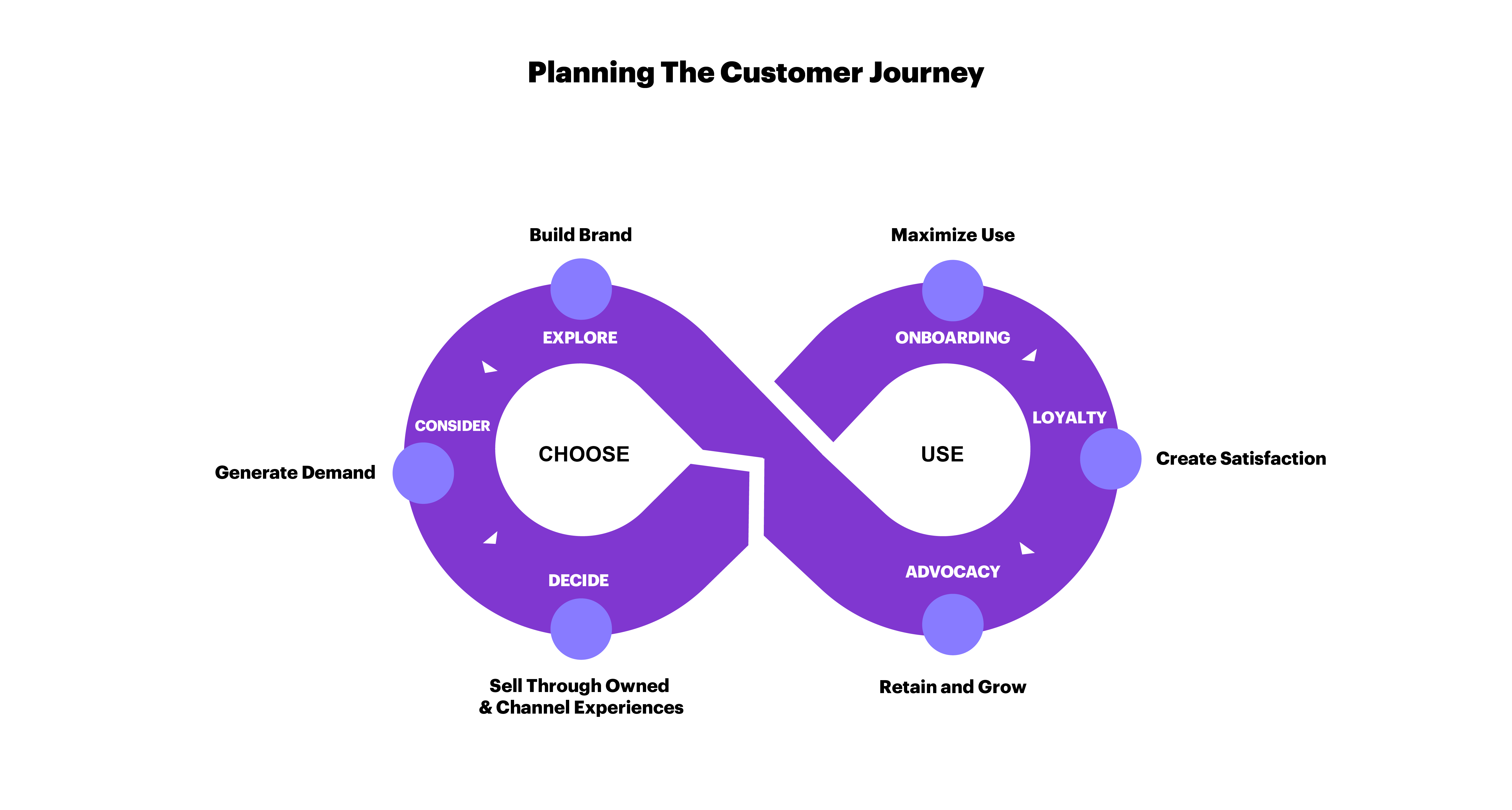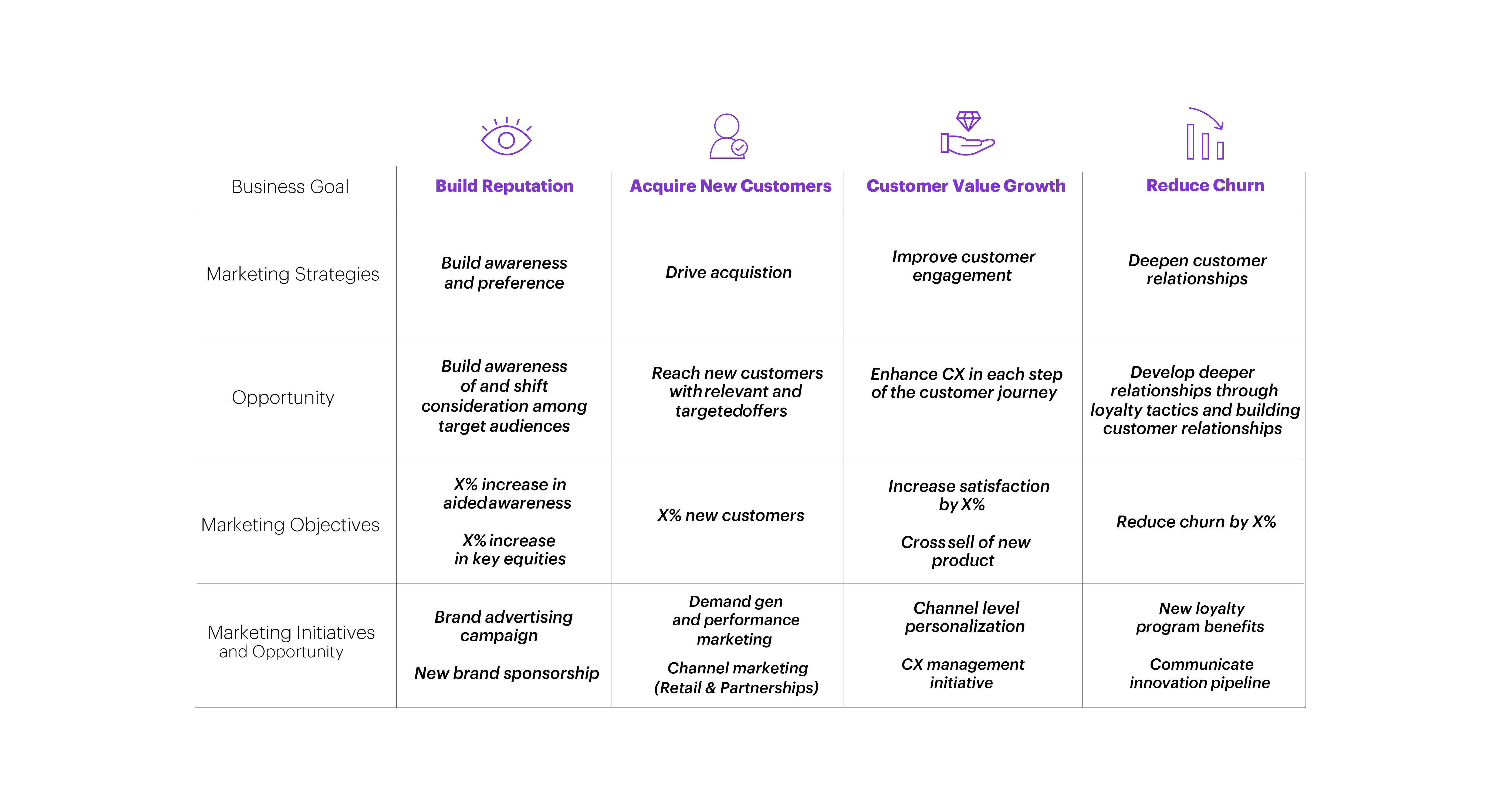BLOG
Modernize the Marketing Planning Cycle
Clear your calendar. It’s time to make room for a brand-new approach to annual marketing plans.
The annual marketing planning cycle desperately needs a makeover. Every marketer who has ever groaned, “There has to be a better way to do this!” is right, and the most effective companies are already finding new ways to inject efficiency and effectiveness into a cumbersome process.
While much of this change has been coming on gradually, changing customer behaviors, increasing demands of marketing within the enterprise and growing opportunities with technology have intensified it. And amid growing business uncertainties–inflation, supply-chain and recession concerns–modern marketers feel an urgency to help drive strategy, not just follow it.
More and more, marketers are being asked to deliver value that is tied to the overall business outcomes.
That’s because the customer journey is more complex and less linear every day, highlighting the tension between brand and demand marketing. Our recent research takes an in-depth look at the intersection of these marketing disciplines, tapping the insights of more than 500 marketers. Our findings underscore that an updated approach to planning separates the most successful companies from competitors.
“Today’s marketers are coxing other execs out of their respective silos, moving to “a more agile, `brains in room’ format,” says Tyrrell Schmidt, CMO, U.S., TD Bank, one of our respondents. “We want to build a structure that puts the customer at the center.”
And business leaders are learning that while the annual planning process is still way too full of retro drudgery, it’s also full of possibility and potential. Many see it as the most creative endeavor of the year, allowing them to show off the value modern marketing can bring to the enterprise.
Here are five ways the most effective marketers are reshaping the annual planning process.
Take an Integrated View
Historically, disparate marketing teams have driven different objectives. Because they’re working separately, they’re not optimized for holistic growth. They’re often not even pointing in the same direction.
Marketing needs a more integrated process. That requires cooperation among brand, demand and corporate marketing teams so that they find agreement on all-important basics (We’ve covered other planning checklists in The Eight Essentials of a Successful Marketing Plan).
For starters, these working groups can nail down a common language (“Do we say `initiatives’ or `programs’? `Campaigns’ or `tactics’?”). They can also agree on standard measurements, balancing short and long-term approaches, as well as lagging and leading indicators. And they can establish a set of unified tools, such as an integrated calendar and a single marketing brief.
Focus on Customers-Not the Funnel

If companies want to be customer-centric in how they market, then they need to be customer-centric in how they plan. Yet too many firms lose sight of the people that matter most.
Part of that stems from the limits of funnel vision. Yes, marketing funnels are the conventional backdrop for planning and helping identify specific marketing strategies. And we’re not suggesting companies shift from that approach outright.
But on its own, the funnel does a poor job of coordinating multiple efforts. And by definition, it takes a company or product view. That’s the opposite of customer-centricity.
A journey view helps assess how to best allocate resources to acquire customers and build loyalty. It also has the added vital benefit of revealing missed opportunities in customer experience.
We understand the shift from the funnel to a customer-centric journey can be challenging, and many will ask if there’s room for both. Of course, marketers can–and maybe even should–keep the funnel in mind even as they develop the journey view. But ultimately, it’s the customer who makes the purchase, so anticipating their needs and providing the right solutions matter more than anything else.
Align Under Shared Initiatives
Companies often struggle with overly complicated messaging strategies scattered across multiple product offerings and customer segments. They frequently say they’d like programming with “fewer, bigger, better” ideas but don’t know how to get there.
It’s complex. Because demand marketing has an expanded role in driving revenue, there’s more pressure to crank out more messages and promotions. That means many competing, overlapping, and siloed marketing initiatives reach customers simultaneously.
That can be managed better with unified views of calendars, a hierarchy for messages and promotions, and commonly integrated plans. Those all build more alignment and clarify optimal resource allocation during the planning process. This view then carries forward into activation and more frequent re-prioritization that may be needed throughout the year.
It can also be an important venue to talk about experimentation. Test-and-learn thinking that too often gets left behind in the planning process. Will those NFTs pay off? The storefront in Horizon Worlds? Anamorphic billboards? No one yet knows what kind of return on investment these might have, and they indeed fail the “Bigger, better” test. But fledgling ideas need budgetary support if the organization wants to gain agility and build a marketing edge.
In our research, we found that Marketers who work for businesses that successfully meet goals cite strategic experimentation as the predominant force behind their investment decision-making – perhaps shifting the mix based on objectives. Compare this to marketers who work for businesses that do not successfully meet goals. They, instead, rely mostly on industry best practices and historical effectiveness to inform their decisions – a more static and unchanging approach.
Importantly, planning under a unified umbrella provides satisfaction. Teams can walk away knowing how their plans and responsibilities support the greater business objectives.
Bring the Village
Those shared initiatives require inviting a bigger cast of characters into the planning process. Integrated marketing means inviting more people into the planning meeting. When setting up planning sessions, marketers should reach beyond product and sales to include research and insights, partners and operations.
However, there’s no one size fits all approach. B2B companies may have to think this through differently, often including sales teams and product leaders even earlier, as part of the bottom-up planning process.
Regardless, all companies should include as many perspectives as possible while also keeping their customers in mind.
We recognize that this may bring up concerns about “too many cooks in the kitchen”? You’re not alone. While it can seem clumsy initially, it’s an important first step to being collaborative. The more companies strive to achieve cross-functional consensus, the less “re-work” and pivoting they need later.
Map to Business Outcomes
Our research finds that marketers who describe their companies as top performers actively align marketing activities and tactics to shared business objectives. While many marketing objectives remain essential to the success of the plan’s performance, this calls for bigger thinking. It connects marketing to the goals of other stakeholders in the firm and functions far beyond their own.
The first step is to decide on those “no-regrets” business opportunities and align the most supportive marketing strategies. Many start with a worksheet that looks like this:

Download the Mapping Marketing Tactics to Shared Business Objectives Worksheet.
FINAL THOUGHTS
The shift toward integrated, customer-centric planning requires weeks if not months of new kinds of preparation. That can include new journey maps and competitive intelligence.
But the pay-off is well worth it. Integrated marketing allows a company to develop a modern approach that connects brand to demand. And ultimately, it serves customer needs better, improves execution and leads to uncommon growth.
Ready to reimagine your 2023 marketing planning process? Get in touch with our marketing and sales team today.
